Sir Thomas Smith was a classicist, diplomat and
Secretary of State in the court of Elizabeth I, and he wrote a book De
Republica Anglorum that was published, posthumously, in 1583. In it, Smith
wrote,
“…torment or question which is used by the order of the civill lawe and custome of other countreis to put a malefactor to excessive paine, to make him confesse of him selfe, or of his felowes or complices, is not used in England.”
Now this is a odd thing for Smith to write, because in a letter
written in Lord Burghley’s hand and with Elizabeth’s signet applied, dated
September 25th 1571, Smith is specifically authorised to put two
servants of the Duke of Norfolk named Barker and Banister, who were prisoners
in the Tower of London, to the rack. Two days later, Smith replied to Burghley,
advising that the racking had yielded some results and might yet yield more.
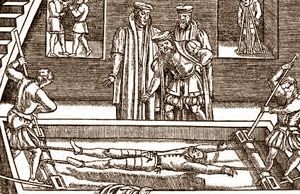 |
| Guy Fawkes racked |
It
is common knowledge that Guy Fawkes was racked in November 1605, to disclose
details of the Gunpowder Plot, and the records of the Tower show that the items
of torture were not short of victims during the reigns of Elizabeth and James
I. Thus, the good knight Smith was being somewhat economical with the truth.
Torture was being used in English prisons and had been for a good many years.
One form was initially called prison forte et dure and a statute of 1275
allows for men who will not answer charges put to them shall ‘… have strong
and hard Imprisonment (prison forte et dure)’ applied. A person could not
be tried for felony until they had pleaded either ‘guilty’ or ‘not
guilty’, but if a guilty person refused to plead, to ‘stand mute for
malice’; their property could not be confiscated by the crown and could be
willed or inherited by their relatives.
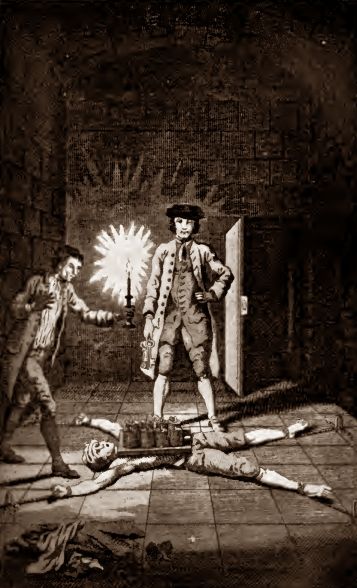 |
| Peine forte et dure - Newgate |
The ‘hard Imprisonment’ meant
being placed in the worst part in the prison, on bare hard ground, clad only in
a linen loin cloth, fed one day on the worst bread and on alternating days
given putrid water (but never fed and watered on the same day), and laden with
iron chains from hand to elbow and from knee to foot. In 1302, one prisoner
subjected to this ‘great penance’ gave up his information after ten
days, but in 1357, Cecilia de Rygeway, indicted for murdering her husband, ‘stood
mute’ and suffered the penance for forty days without relenting and in
consequence was pardoned. This practice was felt to be too harsh and it was too
difficult to assuage the pain upon confession and so it was replaced by a
variation, peine forte et dure, (‘hard and forceful punishment’) where,
in addition to the starving, the prisoners were also pressed with weights, ‘more
than they can bear.’ Shakespeare alludes to this in Troilus and Cressida,
when Pandarus says,
“Because it shall not speak of your pretty encounters, press it to death.”
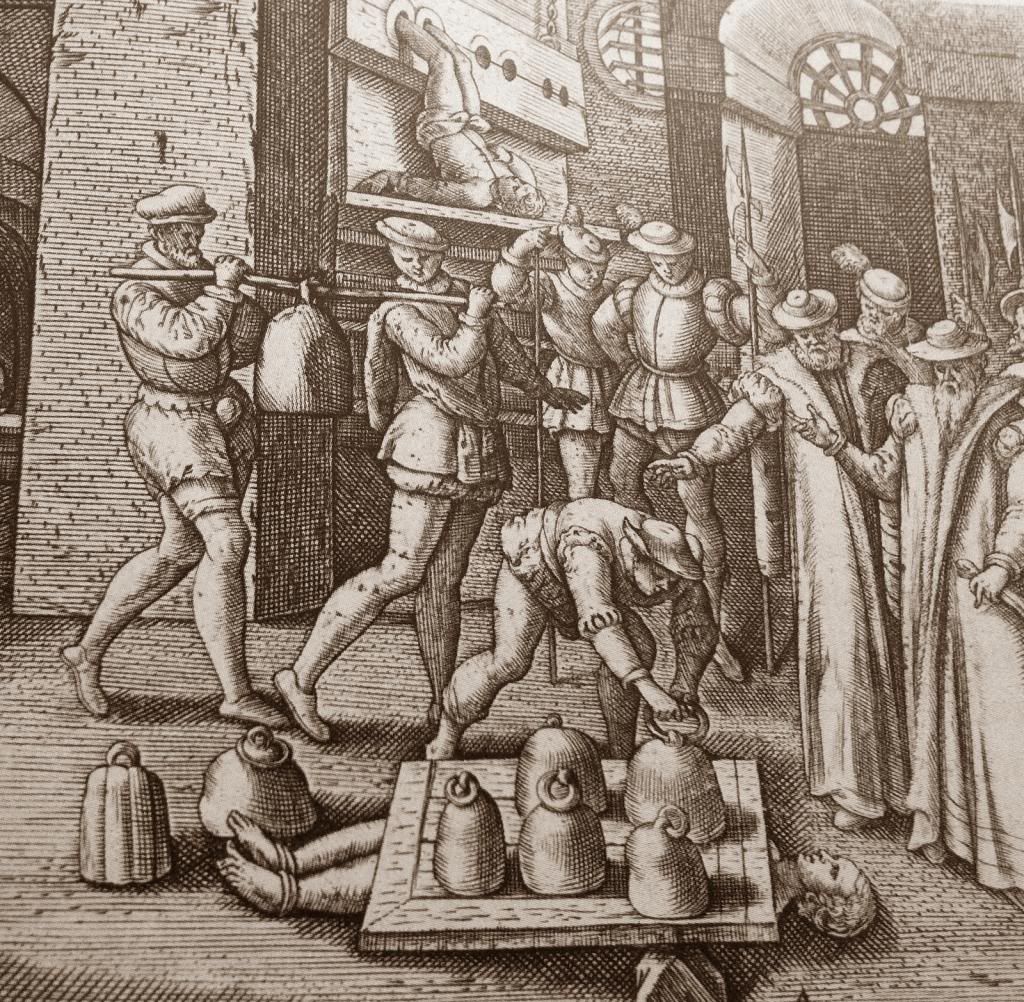 |
| Margaret Clitherow pressed to death |
An instance was recorded from 1406, and further
refinements were added over the years, as in the case of Margaret Clitherow of
York, a Catholic accused of harbouring priests in 1586. Margaret ‘stood mute’
because she feared that any information she might reveal would incriminate her
children and so was condemned to peine forte et dure. She was given only
barley bread and puddle water for three days and then she was stripped and
spread on the floor, with her arms outstretched and bound to two posts, a sharp
stone ‘as much as a man’s fist’ was placed under her back and a
wooden door put over her, onto which was placed seven or eight hundredweight of
stones. Within fifteen minutes, the weights had broken her ribs ‘causing
them to burst forth of the skin’ and although dead, she was left in the
press for six hours.
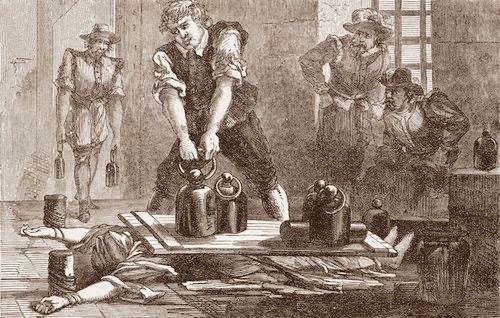 |
| Pressing with weights |
In 1772, it was enacted that anyone standing mute was to
be assumed to be guilty and convicted of the crime charged against him. This
happened in 1777, when Francis Mercier was charged with the murder of David
Samuel Mondrey. Mercier ‘stood mute’ when charged, so the sheriff
ordered a jury to examine whether he did so ‘fraudulently, wilfully, and
obstinately or by the visitation of God.’ The jury concluded that Mercier
had stood mute fraudulently, wilfully or obstinately, and so Mr Justice Aston
immediately passed sentence that Mercier should be executed and his body be
dissected and anatomised.
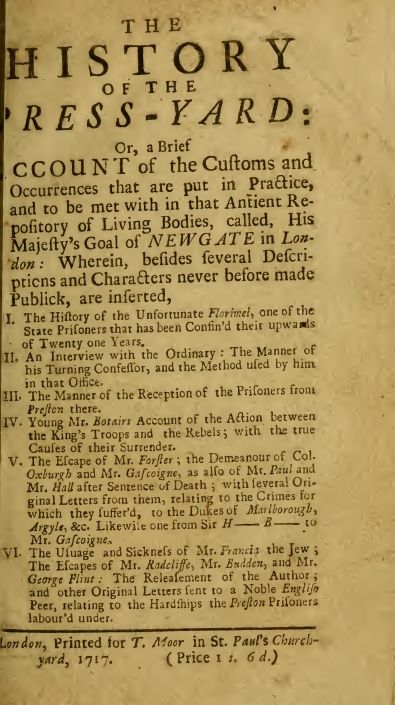 |
| Daniel Defoe (attrib.) - A History of the Press-Yard - 1717 |
In 1827, it was further enacted that if a prisoner
refused to plead, a court might enter a plea of ‘not guilty’, thus
solving a five and a half century old problem.
No comments:
Post a Comment